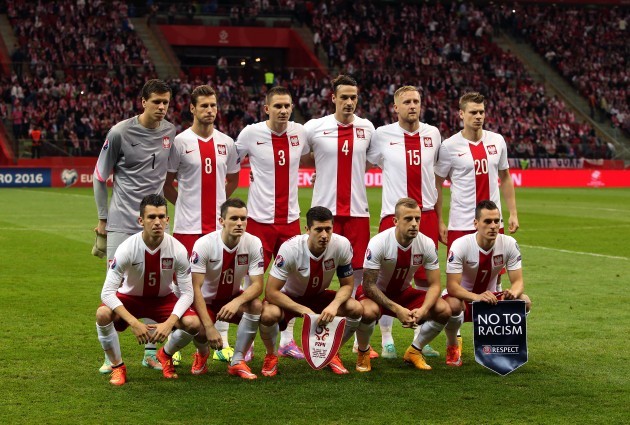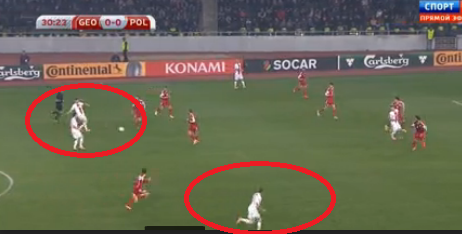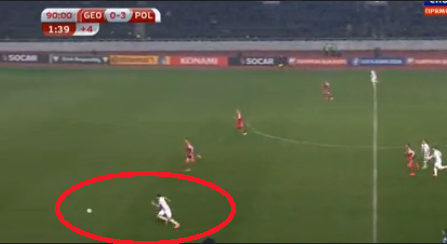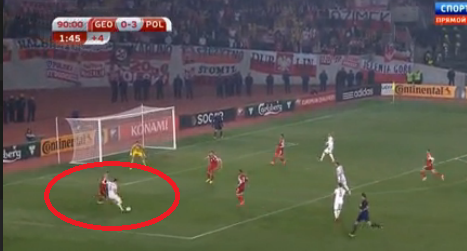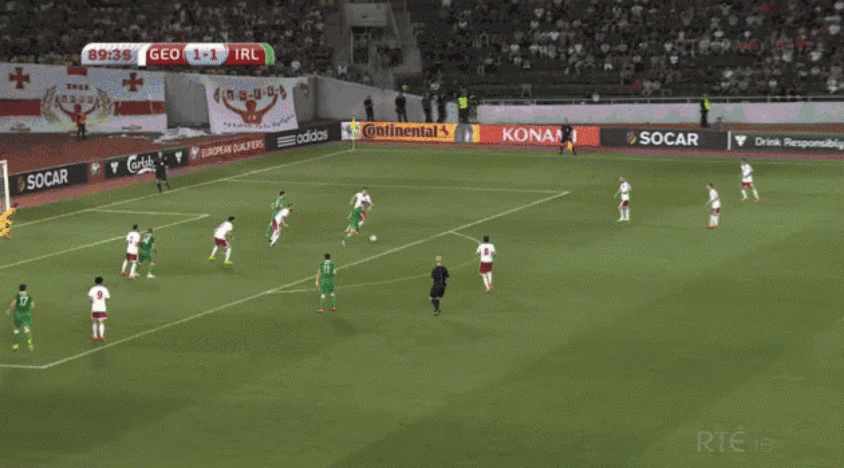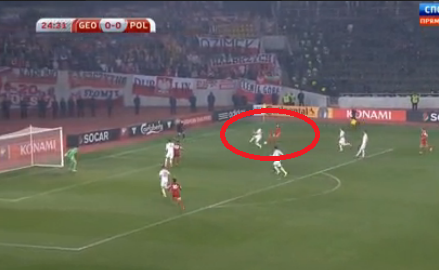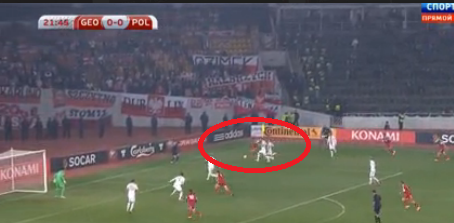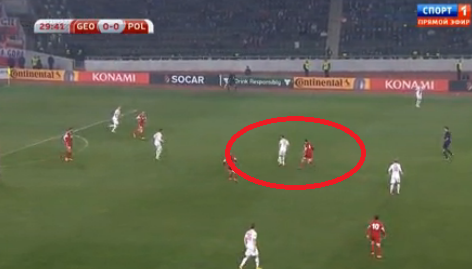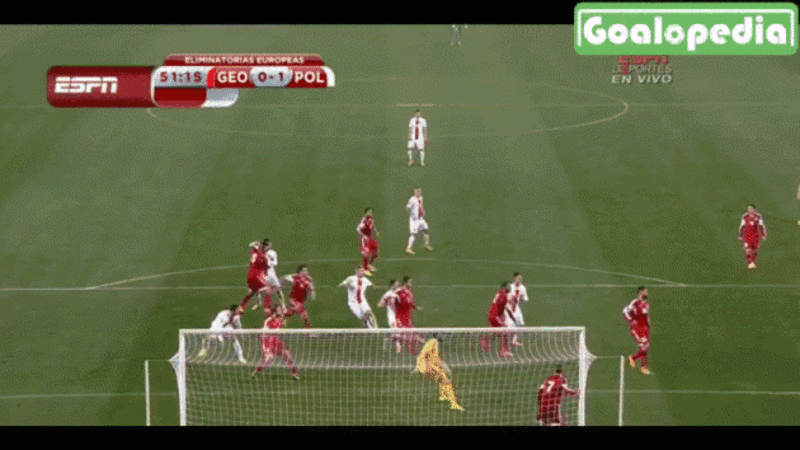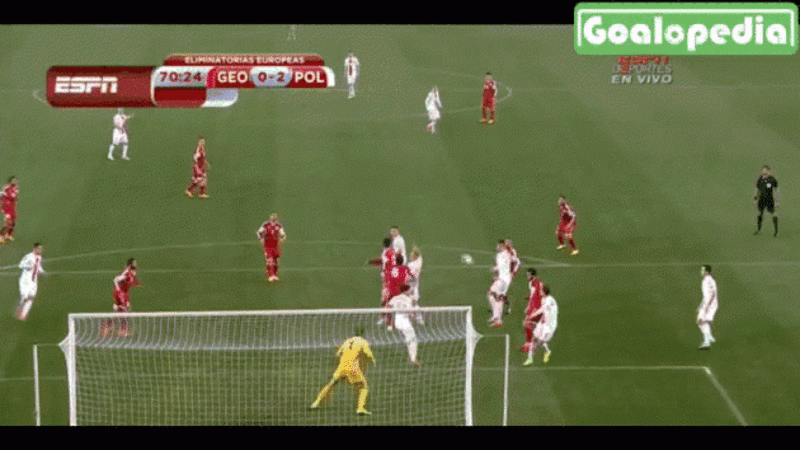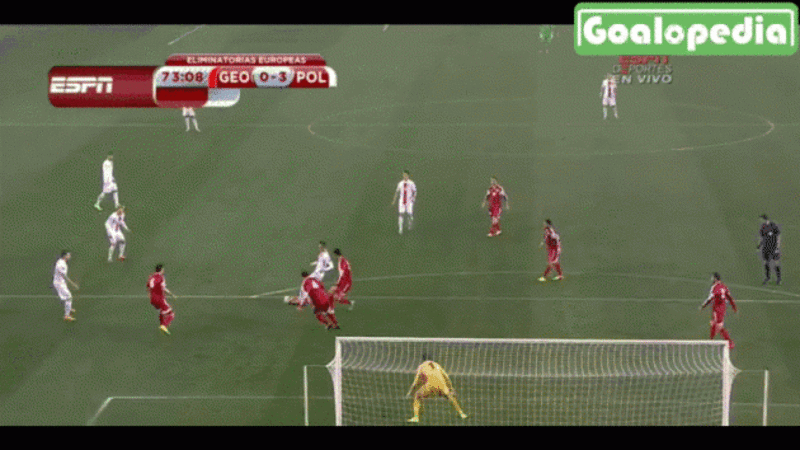POLAND HAVE PUT themselves in an excellent position in Group D ahead of their clash with Ireland this weekend.
Adam Nawalka’s side currently sit top of the table on 10 points — three ahead of Ireland after four games — having won three and drawn one of their matches thus far.
They opened their campaign with an emphatic 7-0 win over Gibraltar (the same score Ireland beat the minnows by), before a sensational 2-0 defeat over group favourites Germany — their first win against the world champions in 19 attempts.
The Gibraltar match was as one-sided as the scoreline suggests, while the Germany game was an archetypal smash-and-grab victory, with Joachim Löw’s side dominating for long spells, only for a mixture of poor finishing and good goalkeeping by Wojciech Szczesny to deny them, while goals on the counter-attack from Arkadiusz Milik (51) and Sebastian Mila (88) inspired a memorable win.
They then drew 2-2 with Scotland in Warsaw. Krzysztof Maczynski put them into an 11th minute lead after he capitalised on an Alan Hutton defensive error, before Shaun Maloney and Steven Naismith put the Scots ahead. However, Ajax man Milik was on target with a beautifully struck goal 14 minutes from time to ensure a deserved share of the points.
All of which brings us to the Georgia game that this article looks at in detail. Going into the match, facing the Georgians away was seen as a tricky test for the Poles. Both Scotland and Ireland could only earn narrow one-goal wins against the same opposition, so it was expected to be a similar slog for the group rivals. And while the 4-0 outcome suggests the match was actually incredibly easy for the Poles, the result does not fully reflect how the game panned out, as we will illustrate below.
Teams and formations
Going into this match, Poland made one change from the Scotland game the previous month, with Mila coming in for Waldemar Sobota (who misses the Irish game through injury), after the Lechia Gdansk man had replaced his teammate against the Scots.
They consequently played a 4-5-1/4-3-2-1, which was a change from the 4-4-2 employed at home against the Scots.
(The Poland team prepare to for the match)
The goalscoring hero against Gordon Strachan’s side, Milik, was moved to a deeper role behind the striker, while Mila formed part of a three-man attack with Lewandowski and Grosicki (who misses the Ireland game through injury), who had previously been a more conventional winger.
Sevilla’s Grzegorz Krychowiak and Maczynski again occupied the central midfield roles, and the back five was exactly the same, with Wojciech Szczesny in goals, and Torino captain Kamil Glik partnering Lukasz Szukala in the centre, while Lucasz Piszczek and Artur Jedrzejczyk were in the full-back slots.
Incidentally, the backline will have a significantly different look against Ireland, with both the aforementioned full-backs currently out injured.
Georgia, meanwhile, lined out with the exact same formation as their opponents. Empoli’s Levan Mchedlidze was the lone frontman, with Jaba Kankava, Aleksandr Kobakhidze and Spartak Moscow’s Jano Ananidze just behind him.
Vitesse’s Guram Kashia and Murtaz Daushvilli were the holding midfielders, while Akaki Khubutia, Solomon Kvirkvelia, Gia Grigalava, Ucha Lobzhanidze and goalkeeper Giorgi Loria made up the back five.
Cagey opening stages
The opening exchanges of this game were a fairly cautious and relatively uneventful affair. Georgia signalled their intent straight away with an aimless long ball down the field following kick-off.
Poland dominated possession thereafter and passed the ball around competently, but struggled to get past the Georgian wall of players, much as Ireland had done at the same venue back in September, as the hosts performed well to frustrate their more illustrious opponents early on.
And on the rare occasions when Poland did find themselves in promising positions, the likes of Milik and Mila were wasteful in possession, over-hitting passes or attempting overly ambitious shots that failed to trouble the goalkeeper.
Poland’s liveliest and most influential player was undoubtedly Kamil Grosicki early on. The Stade Rennais winger clearly had the beating of his marker, but even he was guilty of delivering a poor final ball.
Lewandowski shows flashes of class
Granted, it was not Robert Lewandowski’s best game by any means. He has scored 20 goals in total this season, but none of them came against Georgia, however he showed sporadic flashes of genius that reiterated his status as one of the world’s best strikers.
What makes Lewandowski special is not only his goals, but his link-up play, and the latter quality was on display at times in Tbilisi.
The big striker, despite sometimes playing as the lone frontman, often likes to come deep to receive the ball and thread through passes for others to run onto.
Twice in the first-half, the striker tried to link up with former Dortmund teammate Lucasz Piszczek, as he collected the ball in the middle of the field and spotted his overlapping run. While on the second occasion, the pass was slightly overhit, Lewandowski was successful with his first attempt, allowing the overlapping full-back to receive the ball at speed, beating his man with an excellent first touch, before curling a shot just over.
(Lewandowski tends to link up well with others, particularly ex-Dortmund teammate Piszczek)
The striker was more prominent in the second period, growing in influence and setting up some more promising Poland attacks with clever passes.
Ireland will therefore obviously need to be wary of the Bayern Munich man. There must be good communication between the defence and midfield, with James McCarthy or Glenn Whelan needing to track the striker whenever he drops deep, in order to prevent the Irish centre-backs from being dragged out of position.
Moreover, Lewandowski also showed his ability to play a more direct style. For Poland’s fourth goal, he sprinted with the ball from just past the halfway line all the way to the box, before his shot deflected into the path of Milik to slot home.
(Lewandowski sprints from his own half to the box in just over six seconds)
Kobakhidze provides hope
After the game, some Irish critics and fans worried that the result signalled Poland’s superiority to the Irish team.
After all, Martin O’Neill’s needed a last-minute Aiden McGeady goal to beat Georgia (see below), whereas the Poles secured a seemingly ‘easy’ victory against them.
However, the 4-0 outcome was more than a little harsh on the hosts. In fact, this game was very much in the balance up until the 69th minute.
Shortly before Krychowiak’s killer second goal, Kankava flashed a powerful shot just wide from outside the box. Had the effort been a few inches to the right, the match could have panned out in an entirely different manner. And it was far from Georgia’s only chance of the game.
While Milik, the highly regarded young Ajax attacker, hit the post with an audacious attempt from distance and Grosicki’s half volley from a clever through pass forced the goalkeeper into a decent save, it was Georgia who had the best chance of the half, when Kobakhidze blazed over with the goal at his mercy, after Poland failed to deal with a set piece lofted into the box.
And despite missing this glaring opportunity, Kobakhidze was still Georgia’s best player and biggest threat going forward.
Poland constantly looked vulnerable down the left, with Georgia’s rare attacks almost always emanating down that side.
However, perhaps unfortunately for Ireland, the left-back who played in the game, Artur Jedrzejczyk, is out injured for Sunday’s match.
(Kobakhidze exposed Poland’s weakness in the full-back position on more than one occasion)
Kobakhidze regularly outpaced his opponents and got behind the Poland defence, but unfortunately for Georgia, a combination of bad delivery and a lack of bodies in the box prevented these promising attacks from yielding a reward.
The visitors also predominantly played the ball out from the back, and while they didn’t do it often enough, there were one or two occasions, where Georgia pressed the Poles intensively and forced them into conceding possession in dangerous areas. Martin O’Neill, whose Celtic and Leicester teams in particular were famed for their phenomenal work-rate and off-the-ball ability, has surely been taking note.
(Georgia’s occasional high pressing forced the Polish team into mistakes)
Yet such moments were rare enough for the home side. For the majority of the match, they showed little attacking ambition and appeared content to defend in numbers, only throwing bodies forward when they had won a set piece in a decent position.
A game won and lost at set pieces
George weren’t the only team who were a tad overly reliant on corners and free kicks.
While Poland looked nervy at times when defending set pieces, and were fortunate not to concede from one amid the aforementioned Kobakhidze miss, they scored their first two goals via corners.
Glik put them ahead after 51 minutes when he headed home Krychowiak’s flick-on.
Ireland must pay particular attention to the Torino defender at set pieces, who has an impressive seven goals in all competitions this season, and so evidently has developed a John Terry-esque knack from scoring goals to complement his defensive prowess.
Poland doubled their advantage and effectively ended the game as a contest on 69 minutes, and this time, it was Krychowiak who got on the end of an opponent’s flick-on to slide the ball home.
Therefore, it would be no surprise if Martin O’Neill’s men spend more time than usual this week working on set pieces, especially considering that their most recent match with Scotland was decided by a goal that emanated from a corner.
Poland capitalise on Georgian lack of quality and ill-discipline
While the game was fairly even overall in the first half, the pressure on the Georgian box became more relentless after the break and the goals felt inevitable when they came.
Georgia were conspicuously poor in possession, frequently giving it back to their opponents cheaply, and work rate will only get you so far against opposition of Poland’s calibre.
So it was perhaps apt that just before Poland’s killer second goal, 21-year-old substitute Giorgi Chanturia ran the ball straight out of play amid a promising attack, highlighting a blatant lack of quality in the final third.
And after Krychowiak made it two, Georgia unsurprisingly lost their defensive discipline a little, throwing more bodies forward in the vain hope of getting back into the game.
By contrast, Poland’s confidence was up. They were starting to pass the ball more confidently and beginning to look like the side who beat the world champions 2-0, with the increasingly prominent Lewandowski at the heart of most of their attacks.
With the earlier levels of intensity and competitiveness no longer palpable, Mila took advantage of some less than enthusiastic Georgian closing down to curl home a classy strike from the edge of the box, before Lewandowski’s strike deflected kindly into the path of Milik to slot home and complete an ultimately emphatic win.
Conclusion
The overriding thought from re-watching Poland’s 4-0 win in Georgia is that Adam Nawalka’s side aren’t that dissimilar to Ireland.
Like Ireland, they struggled (albeit not quite as badly) for long periods to find a way past a stubborn Georgian team who were intent on stopping them play, but ultimately, a bit of class and some opportunistic finishing got them over the line.
And like Ireland, they looked a little short of creativity in midfield, aside from the sporadic occasions when lone frontman Lewandowski was allowed space to drop back and pick out an overlapping runner.
Nevertheless, the Poles were eventually able to capitalise on poor Georgian defending from set pieces — not once, but twice — hence, Ireland must be especially wary of their opponents’ threat from this particular department.
While they were hardly put under undue pressure from a mostly lacklustre Georgian attack, the Poles looked quite vulnerable in the full-back positions, as they also did against Scotland at times. And while Jedrzejczyk and Piszczek are both missing on Sunday, it begs the question as to whether their replacements will be equally, if not more, suspect defensively.
Furthermore, another player who Ireland need to keep a close eye on is Ajax youngster Milik, who can play as both a striker and a number 10.
The 21-year-old, who has 16 goals in 27 appearances this campaign at club level, had a quiet enough game for the most part against Georgia, but was still in the right place at the right time to slot in the fourth goal, and also showed a glimpse of his surpreme talent early on by rattling the woodwork from distance.
Milik is most likely to reprise his role in the number 10 position as part of a 4-5-1 formation, given that Poland are the away side on Sunday and would probably not be overly disappointed with a draw. Whether Martin O’Neill does likewise or opts for a more ambitious 4-4-2, with a victory badly needed, will be fascinating to see and is bound to have a big impact on how the match unfolds.

